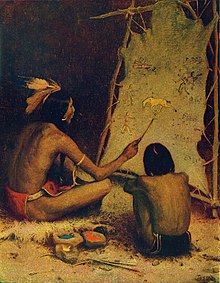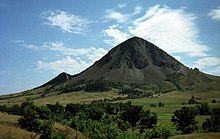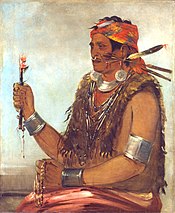
Earthlings are fragile, demanding, and germy, not obviously suited to life elsewhere.
Illustration by Script & Seal
(DJS) Colonizing Mars or any other world, or living in space poses immense challenges. Yet despite the negative press Elon Musk's plans have received recently, I hold that developments in AI, nanotechnology, genetics and other medical technologies, robotics, and other technologies over the coming 10-30 years will allow us to meet these challenges.
On March 27th, an American astronaut named Scott Kelly blasted off from Earth and, six hours later, clambered onto the International Space Station. He’s been there ever since. Each day, the I.S.S. orbits the planet fifteen and a half times, which means that after a month Kelly had completed more than four hundred and fifty circuits. By now, he’s made nearly a thousand.
Kelly, who is fifty-one, is short—five feet seven—and stocky, with a round face and a thin smile. If all goes well, he will not return to sea level until March, 2016. At that point, he will have set an endurance record for an American in space.
Even in brief bursts, space is tough on the human body. Changes in intracranial pressure can lead to eye problems. Weightlessness induces vertigo. Fluids collect in places they shouldn’t. Muscles atrophy and bones grow brittle. Astronauts’ internal organs drift upward and their spines extend. It is expected that by the time Kelly finally descends he will have stretched to five feet nine.
NASA has dubbed Kelly’s circular odyssey the One-Year Mission. As he spins around the Earth, scientists at the agency are tracking his physical and emotional deterioration, monitoring, among other things, his sleep patterns, his heart rate, his immune response, his fine motor skills, his metabolism, and his gut bacteria. Kelly has an identical twin, Mark, who was also an astronaut. (Mark Kelly is perhaps best known as the husband of Gabrielle Giffords, the former Arizona congresswoman.) In the course of the year, Mark will submit to many of the same cognitive and physiological tests as Scott, though without leaving Earth. This will provide a glimpse into the effects of space travel down to the molecular level.
Kelly’s One-Year Mission represents a kind of dress rehearsal for a longer, straighter, and even more punishing voyage. In NASA’s Buzz Lightyear-esque formulation, it’s “a stepping stone” to “Mars and beyond.” At its closest, Mars is thirty-five million miles from Earth, and, under the most plausible scenario, getting there takes nine months. Owing to the relative motion of the planets, any astronauts who make it to Mars will have to cool their heels on the red planet for three more months before rocketing back home. What NASA learns about Kelly—at least, so the theory goes—will help it anticipate and overcome the challenges of interplanetary travel.
But even as NASA rehearses for “Mars and beyond” its actual reach has been shrinking. The last time an American made it as far as the moon was in 1972. In fact, since the Nixon Administration, no American has got past what’s known as low Earth orbit, or LEO. (The International Space Station, which circles the globe in LEO, maintains an average altitude of two hundred and twenty miles.) And nowadays even this is farther than NASA can manage.
Since the retirement of the Space Shuttle, in 2011, the agency has lacked the wherewithal to get astronauts into LEO. And so, before Kelly could embark on the One-Year Mission, he first had to fly to Baikonur, on the steppes of central Kazakhstan. There he spent a few nights at the Cosmonaut Hotel before hitching a ride with two Russians on a Soyuz rocket.
It’s true that even a journey of thirty-five million miles has to start somewhere. Still, a reasonable person might ask: Where are we headed? Is it really to Mars? Or is it just to Kazakhstan?
On March 27th, an American astronaut named Scott Kelly blasted off from Earth and, six hours later, clambered onto the International Space Station. He’s been there ever since. Each day, the I.S.S. orbits the planet fifteen and a half times, which means that after a month Kelly had completed more than four hundred and fifty circuits. By now, he’s made nearly a thousand.
Kelly, who is fifty-one, is short—five feet seven—and stocky, with a round face and a thin smile. If all goes well, he will not return to sea level until March, 2016. At that point, he will have set an endurance record for an American in space.
Even in brief bursts, space is tough on the human body. Changes in intracranial pressure can lead to eye problems. Weightlessness induces vertigo. Fluids collect in places they shouldn’t. Muscles atrophy and bones grow brittle. Astronauts’ internal organs drift upward and their spines extend. It is expected that by the time Kelly finally descends he will have stretched to five feet nine.
NASA has dubbed Kelly’s circular odyssey the One-Year Mission. As he spins around the Earth, scientists at the agency are tracking his physical and emotional deterioration, monitoring, among other things, his sleep patterns, his heart rate, his immune response, his fine motor skills, his metabolism, and his gut bacteria. Kelly has an identical twin, Mark, who was also an astronaut. (Mark Kelly is perhaps best known as the husband of Gabrielle Giffords, the former Arizona congresswoman.) In the course of the year, Mark will submit to many of the same cognitive and physiological tests as Scott, though without leaving Earth. This will provide a glimpse into the effects of space travel down to the molecular level.
Kelly’s One-Year Mission represents a kind of dress rehearsal for a longer, straighter, and even more punishing voyage. In NASA’s Buzz Lightyear-esque formulation, it’s “a stepping stone” to “Mars and beyond.” At its closest, Mars is thirty-five million miles from Earth, and, under the most plausible scenario, getting there takes nine months. Owing to the relative motion of the planets, any astronauts who make it to Mars will have to cool their heels on the red planet for three more months before rocketing back home. What NASA learns about Kelly—at least, so the theory goes—will help it anticipate and overcome the challenges of interplanetary travel.
But even as NASA rehearses for “Mars and beyond” its actual reach has been shrinking. The last time an American made it as far as the moon was in 1972. In fact, since the Nixon Administration, no American has got past what’s known as low Earth orbit, or LEO. (The International Space Station, which circles the globe in LEO, maintains an average altitude of two hundred and twenty miles.) And nowadays even this is farther than NASA can manage.
Since the retirement of the Space Shuttle, in 2011, the agency has lacked the wherewithal to get astronauts into LEO. And so, before Kelly could embark on the One-Year Mission, he first had to fly to Baikonur, on the steppes of central Kazakhstan. There he spent a few nights at the Cosmonaut Hotel before hitching a ride with two Russians on a Soyuz rocket.
It’s true that even a journey of thirty-five million miles has to start somewhere. Still, a reasonable person might ask: Where are we headed? Is it really to Mars? Or is it just to Kazakhstan?
Several recent books take up these questions, some head on, others more elliptically. Chris Impey is an astronomer at the University of Arizona who studies the structure and the evolution of the universe. In “Beyond: Our Future in Space” (Norton), he foresees a bright “off-Earth” future. Within twenty years, he predicts, there will be a vibrant space-tourism industry, complete with “zero-gravity sex motels.” In thirty years, he expects “small but viable colonies” on both Mars and the moon. And within a century these colonies will have produced a generation of space-bred babies. In 2115, he writes, a cohort will come of age “who were born off-Earth and who have never been home.”
Impey acknowledges NASA’s current difficulties. Prominently featured in “Beyond” is a graph showing how the agency’s budget has changed over time. From the late nineteen-fifties through the late sixties, it shot up, until, a year or two before the first moon landing, in 1969, it represented almost five per cent of all federal spending. Then, like a piece of space debris hurtling toward Earth, it plummeted. Today, NASA appropriations make up less than 0.5 per cent of federal spending.
“No bucks, no Buck Rogers,” Impey observes. And he’s frank about the failures of the Space Shuttle program, which resulted in two disasters—the loss of the Challenger and the Columbia orbiters and, with these, the lives of fourteen astronauts. Even when its vehicles weren’t blowing up, the shuttle, Impey notes, never functioned as advertised: “the launch rate ended up ten times lower than originally planned and the cost per launch twenty times higher.”
But NASA is no longer the only game in town. Impey is excited by the rash of privately owned firms that are getting into the space business. He cites the “audacious” plans of a Dutch entrepreneur named Bas Lansdorp, who’s been marketing one-way trips to Mars on the Web. Lansdorp, he says, “plans to finance his venture by turning it into a reality TV epic—think Survivor meets The Truman Show meets The Martian Chronicles.” Other commercial ventures include Jeff Bezos’s Blue Origin, Richard Branson’s Virgin Galactic, and Eric Anderson’s Space Adventures. Space Adventures has already carved a niche for itself by negotiating visits to the I.S.S. for well-heeled amateurs. (Most recently, the company “arranged” a visit for the British soprano Sarah Brightman, at a cost of fifty-two million dollars; the singer has now postponed her trip, however, and it seems that a Japanese entrepreneur, Satoshi Takamatsu, will go in her stead.) “After years in the doldrums, space is heating up,” Impey writes.
Stephen L. Petranek, the author of the forthcoming “How We’ll Live on Mars” (Simon & Schuster/TED), is, if anything, even more boosterish. By his timetable, the first people should be showing up on Mars just a little more than a decade from now. Petranek is a journalist who served as the editor-in-chief of the magazine This Old House before moving to Discover, a career path that perhaps explains his book’s focus on issues like bringing the right tools to Martian construction projects. “Someone drilling for water cannot discover halfway through the process that they have failed to anticipate a specific problem—a mineral deposit that requires a special drill bit, for instance,” he points out.
Petranek envisions a multistage settlement program. The first pioneers on Mars, not unlike the American frontiersmen, will have to struggle to survive. Just to have drinking water, they’ll need to plow up the planet’s soil—known as regolith—melt down its ice, and distill the results. To breathe, they’ll have to separate the water into hydrogen and oxygen, then mix the oxygen with an inert gas—argon, perhaps—which they’ll get from, well, somewhere. Eventually, Petranek imagines a shift in the balance. Instead of adjusting to life on Mars, humans will adjust Mars to their needs. They will reëngineer the atmosphere and warm the planet. As the regolith thaws, ancient streams will flow again and life will flourish along their ruddy banks. More and more people will be drawn to Mars, until there will be whole cities of them.
Mars, he writes, “will become the new frontier, the new hope, and the new destiny for millions of earthlings who will do almost anything to seize the opportunities waiting on the Red Planet.”
For another take on man’s future in space, there’s “Exploration and Engineering: The Jet Propulsion Laboratory and the Quest for Mars” (Johns Hopkins), by Erik M. Conway. Conway is a historian of science at the Jet Propulsion Laboratory, which is managed by Caltech, and he writes in a style that’s as dry as the lunar landscape. Exactly the sort of technical issues Impey and Petranek rush past Conway obsesses over. (Much of “Exploration and Engineering” is devoted to valve types and navigational software.)
NASA has, of course, already completed several one-way missions to Mars. It’s also bungled several. Because no people were on board, the successes and the flops tend to blur in the public’s imagination. Conway wants to understand what mistakes were made and what lessons learned from them. The results of this analysis suggest that one might not want to sign up for that first manned voyage.
Consider the case of the Mars Climate Orbiter. This was a craft that looked like an oversized TV set. It was intended to gather data on Mars’s atmosphere and to serve as a communications link for other probes. The hundred-and-twenty-five-million-dollar orbiter was launched from Cape Canaveral on December 11, 1998. It spent the next nine and a half months travelling through the solar system, until, on September 23, 1999, it was time for what’s known in spaceflight circles as “orbit insertion.” Everything seemed to be going according to plan when the craft slipped behind Mars and communication was interrupted. It was supposed to swing back into the clear twenty minutes later, but never did. Instead, it burned up in the Martian atmosphere. Subsequent investigation traced the crash to Lockheed Martin, a NASA contractor. A software engineer at the company had neglected to convert English units into metric ones. As a consequence, estimates of the force of the orbiter’s thruster were off by a factor of 4.5. There had been several chances to catch the slipup, but all of them, according to Conway, had been missed, owing to a combination of “errors, oversights, and understaffing.”
The Jet Propulsion Laboratory, where Conway works, handles Mars missions for NASA. This means that he had access to officials involved in the Climate Orbiter debacle, as well as to those involved in more triumphant projects, like the Mars Exploration Rover Opportunity, or MER-1, which, in January, 2004, landed at a site near the planet’s equator that probably once held liquid water. (Opportunity’s operational life has already lasted more than forty times longer than expected, and the rover continues to send back data to this day.) Conway is sympathetic to the agency’s problems and, like Impey, traces them, at least in part, to a shrinking budget. But, as much as Impey and Petranek are eager to push men into the beyond, Conway hopes they’ll stay put.
According to Conway, there is a “disconnect” between the desire to travel into space and the desire to understand it. This “disconnect” is a more fundamental difficulty for NASA than decades’ worth of budget cuts. It’s a contradiction that’s built into the agency’s structure, which includes a human exploration program on the one hand and a scientific program on the other. The planning for Mars missions so far has been left largely to the science types, but sometimes the human-mission types have insisted on getting involved. Whenever they’ve done so, Conway writes, the result has been “chaos.”
Conway puts himself on the side of science, and, as far as he’s concerned, humans are the wrong stuff. They shouldn’t even be trying to get to another planet. Not only are they fragile, demanding, and expensive to ship; they’re a mess.
“Humans carry biomes with us, outside and inside,” he writes. NASA insists that Mars landers be sterilized, but “we can’t sterilize ourselves.” If people ever do get to the red planet—an event that Conway, now forty-nine, says he considers “unlikely” in his lifetime—they’ll immediately wreck the place, just by showing up: “Scientists want a pristine Mars, uncontaminated by Earth.” If people start rejiggering the atmosphere and thawing the regolith, so much the worse.
“The Mars scientists want to study won’t exist anymore,” Conway writes. “Some other Mars will.”
A couple of weeks after Scott Kelly reached the I.S.S., a privately owned aerospace company, SpaceX, launched a rocket loaded with supplies for the station. In the payload were electronic equipment and food for the crew, as well as twenty live mice slated for dissection. For the benefit of an Italian astronaut named Samantha Cristoforetti, there was also a microgravity espresso maker. (“Consider it one small slurp for man, and one giant slurp for mankind,” the Web site Daily Coffee News observed.)
The rocket carrying the payload had been engineered so that it could be reused. After firing, its first-stage booster was supposed to return to Earth and gently land on a ship parked in the Atlantic. This part of the launch did not go as planned; instead of gracefully descending, the booster tipped over and blew up. SpaceX’s founder, Elon Musk, in a tweet to his two million followers, attributed the accident to a “slower than expected throttle valve response.”
Despite several well-publicized mishaps, SpaceX has probably done more than any other company to prove that private space ventures can, as it were, take off. This has made Musk, whose other business endeavors include PayPal and Tesla, the darling of Mars enthusiasts. (“How We’ll Live on Mars” is basically an extended Musk mash note.) Though SpaceX has yet to get a single person as far as low Earth orbit—it’s supposed to carry its first astronauts in 2017—Musk has said that he’s hard at work on a plan for a “Mars Colonial Transporter.” Recently, he announced that he hoped to reveal details about the transporter’s design by the end of this year.
For Musk, going to Mars is way more than just cool. “Are we on a path to becoming a multiplanet species or not?” he has asked. “If we’re not, well, that’s not a very bright future. We’ll simply be hanging out on Earth until some eventual calamity claims us.”
Impey makes much the same point. “Humankind evolved over millions of years,” he observes. “But over the last 60 years, atomic weaponry created the potential to extinguish ourselves. Sooner or later we must expand beyond this blue and green ball, or go extinct.” So does Petranek. “There are real threats to the continuation of the human race on Earth, including our failure to save the home planet from ecological destruction and the possibility of nuclear war,” he writes. “The first humans who emigrate to Mars are our best hope for the survival of our species.”
Why is it that the same people who believe we can live off-Earth tend to believe we can’t live on it? In a roundabout sort of way, the connection between these two ideas can be traced back to Enrico Fermi. In 1950, Fermi, one of the fathers of the atom bomb, turned to Edward Teller, the father of the hydrogen bomb, and asked, “Where is everybody?” Further discussion of this question yielded the so-called Fermi paradox, which runs as follows:
The Earth is an unexceptional planet revolving around an unexceptional star. Given the age of the universe and the speed of our own technological advancement, you’d expect that some intelligent life-form from another part of the galaxy would already have shown up on Earth. But no such being has been spotted, nor have any signs of one. So where are they?
A decade later, a Harvard-trained astronomer named Frank Drake, pondering a related question, came up with a way to formulate the problem in numerical terms. A key variable in what’s become known as the Drake equation is how long a civilization capable of building rockets and microgravity espresso machines persists. If there are lots of planets out there that are suitable for life, and if life eventually produces intelligence, and if intelligent beings on one planet are capable of figuring out how to communicate with intelligent beings on another, then the fact that we haven’t heard from any suggests that such civilizations don’t last.
“If you look at our current technology level, something strange has to happen to civilisations, and I mean strange in a bad way,” Musk recently told the online magazine Aeon. “And it could be that there are a whole lot of dead, one-planet civilisations.” Of course, a galaxy that contains “a whole lot of dead, one-planet civilisations” may also contain a lot of dead, two-planet ones.
In 1965, as NASA was preparing to put a man on the moon, it funded a study of man’s best friend. The agency was curious what would happen to dogs plunged into the vacuum of space. In groups of three, subject animals were sealed in a chamber and the air was pumped out.
Dogs are adapted to (more or less) the air pressure at sea level. This means that the gases dissolved inside their bodies are in equilibrium with the pressure outside. Put Spot in a vacuum and this healthful balance breaks down. Cameras trained on the vacuum chamber showed the dogs swelling up like balloons or, as a paper summarizing the study’s findings phrased it, “an inflated goat-skin bag.” (Interestingly enough, the dogs’ eyeballs “did not seem to show the effects of this phenomenon,” though the soft tissue around them “was often grossly distended, as was the tongue.”)
The pressure differential also had unhappy gastric consequences. The ballooning dogs expelled air from their bowels; this led frequently—and simultaneously—to defecation, urination, and projectile vomiting. The animals suffered what looked like grand-mal seizures, and their tongues froze. (This last effect was a result of heat loss through rapid evaporation.) All told, a hundred and twenty-six dogs were tested in the chamber, for varying lengths of time. Of those which spent two minutes in simulated space, a third died. The rest deflated and, eventually, recovered. Among those which remained in a vacuum for three minutes, the mortality figure climbed to two-thirds.
I came across “Experimental Animal Decompressions to a Near-Vacuum Environment” while reading up on the One-Year Mission. Maybe it’s just a sign of my geocentric bias, but I was struck by the correspondences. For all his training and his courage, Kelly is basically just another test mammal. Like the dogs, he’s been sealed in an airtight chamber to see how much his body can take. And in both experiments the results, at least in their broad outline, are totally predictable.
Every sensate being we’ve encountered in the universe so far—from dogs and humans and mice to turtles and spiders and seahorses—has evolved to suit the cosmic accident that is Earth. The notion that we could take these forms, most beautiful and most wonderful, and hurl them into space, and that this would, to use Petranek’s formulation, constitute “our best hope,” is either fantastically far-fetched or deeply depressing.
As Impey points out, for six decades we’ve had the capacity to blow ourselves to smithereens. One of these days, we may well do ourselves in; certainly we’re already killing off a whole lot of other species. But the problem with thinking of Mars as a fallback planet (besides the lack of oxygen and air pressure and food and liquid water) is that it overlooks the obvious. Wherever we go, we’ll take ourselves with us. Either we’re capable of dealing with the challenges posed by our own intelligence or we’re not. Perhaps the reason we haven’t met any alien beings is that those which survive aren’t the type to go zipping around the galaxy. Maybe they’ve stayed quietly at home, tending their own gardens.
- Elizabeth Kolbert has been a staff writer at The New Yorker since 1999. She won the 2015 Pulitzer Prize for general nonfiction for “The Sixth Extinction: An Unnatural History.”Read more »














